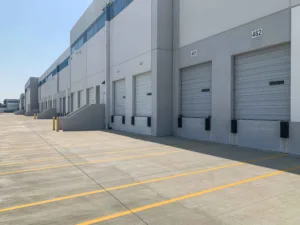Introduction
Investing in self storage facilities can be a lucrative venture, especially as the demand for storage space continues to grow. However, not all self storage properties are created equal. To make a sound investment, you need to carefully evaluate potential facilities, locations and market opportunities. In this blog, we’ll share valuable tips to help you find a great self storage facility to invest in.
1. Location, Location, Location
One of the most critical factors in self storage facility success is its location. Look for facilities in areas with strong population growth, high residential density, or thriving commercial activity. Easy accessibility from major roads and highways is also a must. A well-located facility will attract more tenants and command higher rental rates.
2. Evaluate Market Demand
Before investing, assess the demand for storage in the target area. Research the local market to understand factors such as occupancy rates, rental rates, and the competition. An underserved market with strong demand indicates a promising investment opportunity.
3. Facility Size and Unit Mix
Consider the size and unit mix of the facility. A diverse range of unit sizes allows you to cater to various storage needs, from small personal items to larger commercial equipment. This versatility can help you attract a broader customer base.
4. Condition of the Property
Inspect the property thoroughly to assess its condition. Look for signs of wear and tear, structural issues, or maintenance needs. A well-maintained facility is more likely to attract tenants and requires less immediate investment in repairs or renovations.
5. Security Features
Security is a top priority for self storage tenants. Ensure the facility has robust security measures in place, such as surveillance cameras, access control systems, well-lit premises, and secure locks. A secure facility not only attracts tenants but also reduces the risk of theft or vandalism.
6. Rental and Lease Terms
Review the facility’s rental and lease terms. Understand how rent is calculated, including any potential rent increases. Clear and transparent lease agreements are essential for maintaining good tenant relationships and minimizing disputes.
7. Revenue Potential
Assess the facility’s revenue potential. Calculate the projected rental income based on occupancy rates and rental rates in the area. Consider additional income streams, such as late fees, insurance, and retail sales of packing supplies.
8. Due Diligence
Perform thorough due diligence before making an investment. This includes reviewing financial records, tenant agreements, and any outstanding legal or environmental issues related to the property. Hire professionals, such as real estate attorneys and inspectors, to assist with the due diligence process.
9. Long-Term Viability
Evaluate the long-term viability of the investment. Consider factors like the potential for property appreciation, economic stability in the region, and any planned developments or infrastructure changes that could impact the facility’s value.
10. Management and Operations
Assess the facility’s management and operations. A well-managed facility is more likely to achieve sustained success. If you plan to outsource management, research and select a reputable management company with experience in self storage.
Conclusion
Investing in a self storage facility can be a rewarding endeavor when approached with diligence and careful consideration. By focusing on location, market demand, property condition, security, lease terms, revenue potential, due diligence, long-term viability, and effective management, you can increase your chances of finding a great self storage facility investment opportunity. Remember that thorough research and a keen eye for detail are your allies in making a successful investment in the self storage industry.





